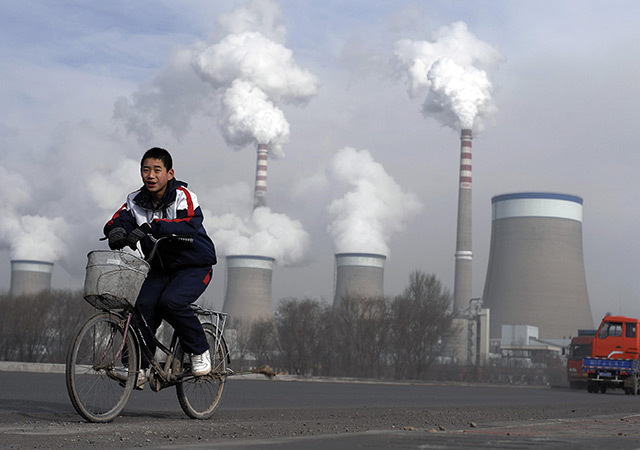
Humankind aren’t cleaning up their energy systems despite increasing investment in renewable power, according to the International Energy Agency, and the primary culprit is cheap coal.
The IEA warns in its latest study that carbon intensity, or the amount of carbon dioxide released for each unit of energy consumed around the world, has remained static since 1990.
This means that the planet is allegedly headed for six degrees Celsius of warming above pre-industrial levels.
The agency has mapped three different scenarios for the future development of the world’s energy systems – from “6DS”, where temperatures go up by six degrees down to “2DS”, where the rise is limited to two degrees.
The 6DS scenario, says the IEA, is “largely an extension of current trends”. Under the 4DS and 2DS scenario, expansion of renewables and energy efficiency measures mean that the energy system becomes less carbon intense, limiting greenhouse gas emissions to four degrees and two degrees respectively.
Investment in renewables has doubled in the last decade, reaching a record high in 2011. The IEA says renewable power is on track to generate 25% of the world’s electricity by 2020. This is consistent with its 2DS scenario, or a global temperature rise of two degrees.
But any gains made are being cancelled out by the increasing use of coal. During the first 10 years of this century, the amount of energy being generated from nuclear or renewables grew 25%. But in the same time period, coal-fired generation jumped 45%.
China and India both consumed more coal than ever before. China’s coal consumption alone represented nearly half (46.2%) of global demand in 2011. Meanwhile, the boom in US home-grown gas meant it exported more of its coal to Europe.
As a result, global emissions went up. And global coal demand is set to increase by another 2.6% every year – a prediction the IEA says “is fundamentally inconsistent with a low-carbon future”.
Modern “supercritical” coal power stations are much more efficient than older, “subcritical” units, but 75% of the world’s coal power stations are subcritical, and only half of the new ones being built are of the more modern, efficient variety.
Carbon Capture and Storage (CCS) is not a panacea . . . yet. The IEA envisages that, if the world is going to reduce emissions in line with the 2DS scenario, 20% of emissions cuts need to come from CCS by 2050.
But the agency says there is a lack of “coherent inventive policies” around the world that would get CCS going.
While the American shale gas boom has driven a “coal to gas switch”, driving down emissions locally, in Europe, a low carbon price, cheap coal and costly gas are driving the trajectory in the opposite direction.
Overall, the IEA warns: “We cannot afford another 20 years of listlessness.”
Recommended for you
